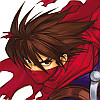
"Settlers of Catan" is a multiplayer board game where players must collect resources and build settlements to colonize the island of Catan. This is an MDA-analysis of the game, examining the Mechanics, Dynamics, and Aesthetic models of the game.
1
Mechanics: Long Setup – While I played the online version of Settles of Catan, I understand that the setup for the board game is quite elaborate. You have to arrange the land tile hexes, the island tiles around them, the numbers within the hexes, the robber, the ports, the appropriate resources and buildings to the respective players, and the exhaustive goes on and on…
Dynamics: Pre-Planning – After the elaborate setup, players will have to place two settlements and two roads on the board. They know that where they place them may make or break their chances at winning the game. So while the game is setup, players already begin to plan their strategies, paying careful attention to the prime locations on the board, places that have high probabilistic numbers, are on the borders of different land tiles, are near a port, and have wide open areas for expansion.
Aesthetics: Emotional and Time Pre-Investment – It takes about 10 minutes to coordinate and distribute all the units in the game. During that time, players will feel already invested, both time-wise (10 minutes) and emotionally (through pre-planning), even though the game hasn’t started. Players begin to form their strategies - and intentions - before the dice are even rolled. Players are not only experience an ongoing emotional investment, but a pre-emotional investment.
2
Mechanics: Setup of Various Environmental Tiles – During setup, players must decide where to place, some randomly, each land tile and each water tile. The water and port tiles surround the land tiles, which are placed in the middle of the board and are comprised of forests, mountains, hills, plains, and pastures. Then, they place numbers on each land tile systematically using the special letter/number hex tiles.
Dynamics: Island Assembly - Players arrange tiles and numbers quite randomly onto the board. Players can achieve different layouts and actively assemble the island. In a way, player feel like they are a god, creating a different island for every game.
Aesthetics: Prologue & Freshness – Since there are so many ways to assemble the island, players will feel that each time they play the game is a unique experience. How the numbers and land tiles are arranged keep the strategies at least partially dependent on the layout of the board. This god-like feeling also initiates a prologue, the beginning of the narrative. Players feel like they are actually discovering a new island, with water surrounding a land with different environments, and they begin the make-believe of actually settling and colonizing the island of Catan.
3
Mechanics: Dice Roll – Players roll a pair of dice to determine player order and, more importantly, which resources are made at any one turn. Players who have settlements or cities that border a hex labeled with that rolled number gain appropriate resources from that hex.
Aesthetics: Odds-Centered Strategy - The random distribution of a 2D6 comes into effect. It invokes strategies that lead city and settlement placement, as hexes with numbers close to “7” (but not “7” due to the robber) have a higher resource-productivity rate. Players must take dice odds into consideration when expanding their territory, taking into account the quantity and variety of land tiles. The possibility of not gaining any goods during a round also provokes a “spend or save” decision. The choice to either save goods for a city or use them now for a road or a development card appears often. Also, since there are multiple hexes with the same numbers and there frequently are multiple settlements and cities that border a hex, production is shared amongst players. Often, more than one player produces goods on any given roll.
Aesthetics: Luck, Tension, Cooperation – Since resource production depends entirely on the fate of the roll, players never know whether they will receive the resources they need to attribute points. Some rounds will have them gain a wealth of goods while other rounds will have them produce nothing, and even possibly lose goods (if opponents use progress development cards against them). On top of the “spend and save” dynamic, the high and lows of the luck of the dice create tension throughout the game and players are always on edge, always emotionally invested in the game. Passive cooperation is also present, because most players gain resources at the same time. It serves as a constant reminder that players are all trying to reach the same goal.
4
Mechanics: Roads – Players must build roads, by trading one wood and one brick resource to the bank during their turn, in order to create additional settlements. To further induce players, a +2 bonus is given to the player that creates the longest road (which must be of at least length 5). Roads are placed in between hexes and cannot be built on top of another road – there can only be one road on each edge.
Dynamics: Territory – Players look for the best placement of roads so that they have enough open space for settlements (or future settlements), and long roads (if they are shooting for the +2 bonus). Since roads cannot overlap, placing roads play an important role in impeding the progress of another player’s roads.
Aesthetics: Spatial Ownership and Awareness – Besides the flexibility in choice of how a player can gain points (the +2 bonus), players must become spatially aware of the board beyond just the hex tiles. Players must pay attention to the edges between hexes and translate clear or used edges into strategy. Roads are also a means of gaining land – ownership of the board, if you will – and serves a physical reference of the player’s progress. The more roads the player has, the better off they are in general.
5
Mechanics: Variety of Resources and Buildings – Different land tiles produce different resources: hills produce brick, mountains produce ore, forests provide trees, fields provide wheat, and pastures have sheep. Similarly, different resources can make different buildings: 1 of each resource except for an ore can be turned into a settlement; 2 brick and 3 ore can turn a settlement into a city; 1 brick and 1 wood creates a road; and (oddly) 1 sheep, 1 ore, and 1 wheat can be exchanged for a development card.
Dynamics: Assortment and Trade - Players must shoot for specific goods to build specific buildings. While different strategies yield various ratios of goods that a player desires, all players generally want to have an assortment of goods. That way, they can build whatever they need at the appropriate time. Going with the odds, players won’t have all the resources they need, especially at the beginning of the game, so there is an incentive to ask other players for goods; rather than trading 3:1 by way of a port or 4:1 by trading with the bank. The possibility of making a 1:1 deal with another player initiates trade.
Aesthetics: Unit Cohesion and Immersion – The fact that lands tiles produce resources that make sense – mountains don’t produce sheep (unless they are really funky sheep) – and that buildings in real-life are made by those resources creates a sense of realism. Players bond with the gameplay on a basis of common knowledge. Furthermore, players feel like they are truly colonizing an island – cities are not made of steel but of more primitive materials. Settlers of Catan presents an islander culture that is believable.
6
Mechanics: Trade System with Players – During their turn after rolling the dice, players may offer a trade (must be public) between any amount and assortment of resources to selected players; that is, a player can open trade exclusively to other players and not to others. The offer can be rejected, however.
Dynamics: Socialization - Even though rejection occurs often, the tangible possibility of making a 1:1-resource deal with another player offers a welcoming alternative to the 3:1 port and 4:1 bank. Since players can selectively choose who they deal with, it also shows who that player is against and who that player is in allegiance with. In most cases, and especially when playing against robots online, cooperative competition comes into effect. If there is a substantial leader, then the other players usually exclude trade with the leader and reject offers made by the leader. Whatever the case, players converse with each other and can influence the outcome of a deal, whether it be their own offer or not.
Aesthetics: Real-Time Strategy, Personalization - This mechanic alone is what separates Settles of Catan from most other board games. In addition to the luck of the dice, it uses socialization as a way of creating a real-time strategy effect. Trade induces strategy, which in turn induces more trade, and coupled with dice-rolling and resource balancing acts, the game employs player interaction as a means of getting away from the tradition of turn-based board games. Moreover, a player’s expression and personality translates into their actions. In general, a passive player won’t offer as many trades, a loner won’t trade altogether, a barterer will make many trades, and essentially, how a person trades reflects a part of their personality. There is a self-story that personalizes the game, because the outcome does not only depend directly on the dice, but also on the personalities of the players. At the same time, the game can be won whether a player trades or not, so while there may be an incentive to trade, players won’t feel like their lack of trading immediately puts them out of the running to win. Settles of Catan is approachable to different kinds of players, if not all.
7
Mechanics: Development Cards – By trading one sheep, one grain, and one ore, players can draw a card from the top of the development deck, receiving either a Progress card, a Knight card, or a Victory Point card. Players hide their cards and cards can be played at any time during their turn, even before they roll dice. Progress cards are one-time effects that bolster their position, and one card in particular – Monopoly – takes all resources of one type from a player’s opponents into his or her stock. Knight Cards instantly moves the robber piece when one is played, and a +2 bonus is given to a player with the largest army (of at least 3 Knight Cards). Victory Point cards are instant points that are used to fulfill the 10-point winning condition.
Dynamics: Secret Weapon – Since cards are concealed and players can use them at any time during their time, cards are used like daggers. They are secret weapons or last-ditch efforts that can turn the tide. Usually, players can tell how well other players are doing by the number of roads, cities, and settlements that player has. But with Victory Point cards and the +2 bonus for having the largest army, players can hide how many points they actually have.
Aesthetics: Surprise – Besides opening the possibilities of how to gain points, cards provide a sudden surprise. Bam! When a player plays a card, all attention focuses on that action and since it could happen during any time, it adds tension. Players also feel a sense of ownership and power when they hold cards like Monopoly, because they know that they have a back-up plan or some incredible force they can use - sort of like owning a nuclear bomb. Development cards keep players on the tip of their toes and fosters an uneasy feeling with other players that only enhances the sense of competition.
8
Mechanics: Robber – When a player rolls a “7” or when a player plays a Knight card, players must discard excess resources, and the robber moves from his square to a space of that player’s choosing. The robber blocks production in the new hex and steals a resource card, at random, on behalf of the player who moved him from any one player who has a settlement or city touching the hex the robber is placed in.
Dynamics: Forced Conflict - Since the probability of rolling a “7” on a 2D6 is about a 20%, the robber will probably be moved more than enough times to see its effect. Since players can steal resources from opposing players and prevent production of any hex, a balancing act occurs. Further pursuing the cooperative competition dynamic, players naturally go after the person in the lead, by either preventing production of one of their hexes and/or stealing that lead player’s goods.
Aesthetics: Revenge - First, the idea that the robber starts in the desert square in a purely aesthetic choice that makes the robber seem like a dervish, an Aladdin of sorts. The robber acts sort of like a neutral party, since anyone can employ his “services”, and thereby fosters revenge all the more. (It wasn’t me that stole your goods, it was the robber. I was forced.) Sure, revenge isn’t the best of reasons to play a game, but forced conflict through the robber fuels cooperative competition, providing an unspoken competition between players that everyone knows exist.
| Most recent blog posts from Nicholas Tan... | |
| Feedback | |
 |
lasthero - April 17, 2006 (05:13 PM) My eyelids closed and refused to open for a while. |
 |
Genj - April 17, 2006 (06:23 PM) With EmP dead (and Team EmP with it), I think lasthero, True, Draqq and myself need to form a team of awesome reviewers. |
 |
True - April 17, 2006 (07:11 PM) I'm all for that one. |
 |
tristis_iranica - April 17, 2006 (07:15 PM) But Genj, that's the funny thing. You're about as dead as dead can be, and I think if it wasn't for the preservatives found in your strange music tastes, you'd have wasted away into dust. YOU'RE OLD!!!! |
 |
Genj - April 17, 2006 (07:27 PM) I've nearly reached 20! |
 |
draqq_zyxx - April 17, 2006 (07:49 PM) Sure. Joining Team, um, um, um, genj? would be great. |
 |
Genj - April 18, 2006 (05:02 AM) No naming things after me. |
 |
draqq_zyxx - April 18, 2006 (02:17 PM) Ok, then Team Abythic. |
 |
True - April 19, 2006 (09:35 AM) I vote for "Super Best Friends" |
 |
Genj - April 19, 2006 (03:00 PM) Oh god no. |
| EmP - April 20, 2006 (02:16 PM) LH is still under contract. You'll have to lease him. |
|
 |
True - April 30, 2006 (08:13 PM) So... what happened to our super group? I say we get Mid instead of hero. Leases are expensive. |
